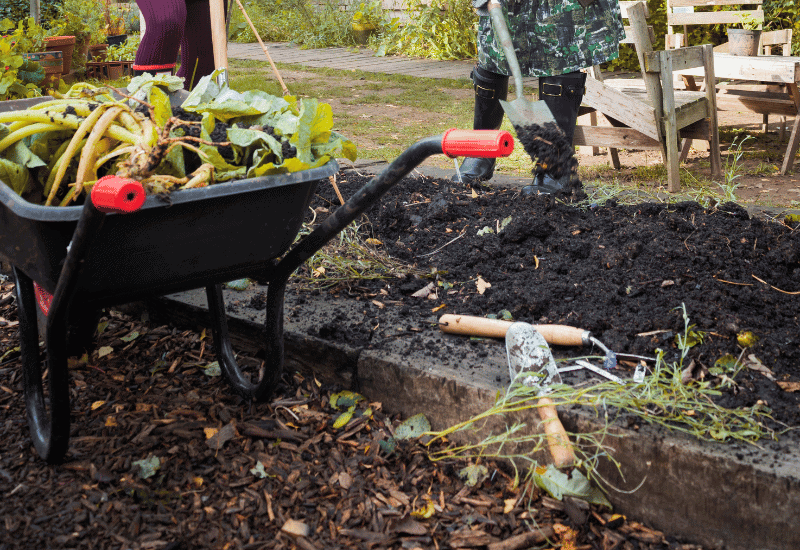
As the last plant in our gardens succumbs to the fall frost, we sadly think gardening is over for the year. Whether your climate is temperate enough to garden all year, or is sleeping under a blanket of snow, there are many ways we can build the soil and improve our garden during the winter.
We can stop our fall cleanup, and leave decaying plant debris to protect the soil and feed winter wildlife. Or we can grow cover crops, put down a winter mulch, or apply certain soil amendments.
And sometimes what we don’t do is just as important as what we do. For starters, we can stop tilling, hold off on applying compost, and avoid walking in the garden. We can even stop weeding to create a ‘wild’ mulch.
Here are 10 tips on how to build soil over winter, and get ready to grow amazing vegetables in the spring.
1. Don’t Clean Up The Garden
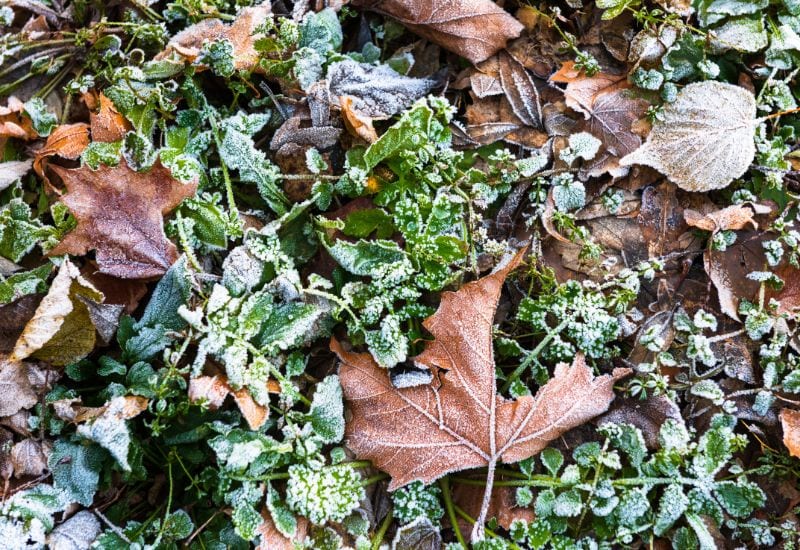
Cleaning up the garden in the fall is a common chore that many of us do. There is something satisfying about removing the old plant debris and preparing each bed for spring planting. However, leaving the dead plants in the garden can help improve your soil over winter by:
So what should you leave in the garden over the winter? Start by leaving any annuals in place since you can remove them easily in the spring.
Also, when you do your final harvest, consider cutting the plants off at the ground instead of pulling them out so the roots remain in place. Also, leave any plant matter that has died and fallen on the ground.
This is also true for many weeds. If the weeds have not gone to seed, they can safely be left in the garden all winter long.
In a temperate climate, weeds will keep growing slowly and will protect the soil from washing away.
When it’s cold, they will flatten down under a thick blanket of snow and cover the soil. In either case, the weeds can be incorporated into the soil in the spring, where they will decompose and feed your soil.
2. Grow A Winter Bird Garden
Since birds can be very beneficial to the winter garden, why not try and attract them? To grow a winter bird garden, you need to grow plants that birds can use for food and shelter during the winter.
While they spend their days eating weed seeds and yucky bugs, you won’t have to worry about them eating your berries or other precious crops.
Your bird garden can consist of perennials, such as holly bushes or roses, or annuals, like sunflowers. Here is a great site for help growing a bird garden. Select plants that are ideal for your locale.
3. Remove Diseased And Sick Plants
Not cleaning up your garden in the fall does come with a caveat. This does not include sick or diseased plants.
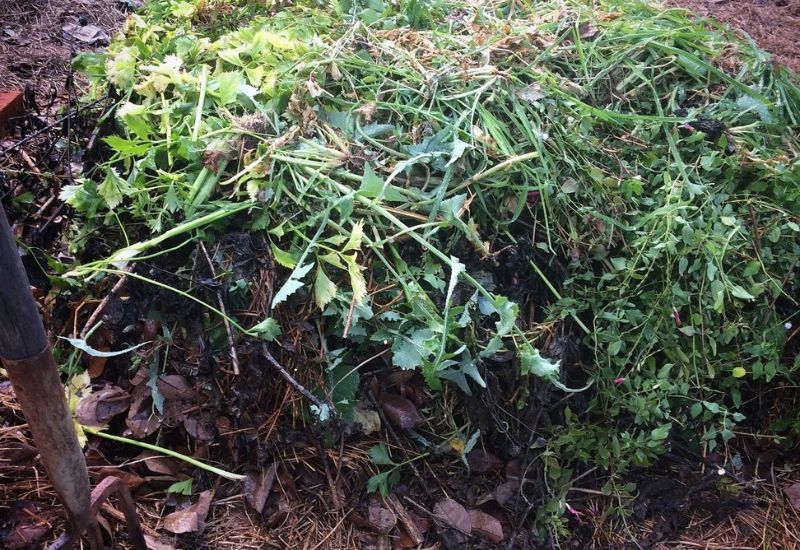
You should always remove these plants from your garden, as the pathogens or fungi can overwinter and come back in the spring. They can infect a whole new season of crops.
In many cases, it can also be a good idea to remove damaged plants since they are more susceptible to infection from diseases and fungi.
Of course, this should be done with common sense as a guide. Certain venerable plants or cultivars that are difficult to establish can be treated rather than culled, as it would be a shame for all your hard work to go to waste.
Remember, do not add these diseased plants to your compost since many pathogens can survive the composting process.
Instead, burn them, haul them to the landfill, or dispose of them away from your (and your neighbor’s garden).
4. Grow Winter Cover Crops
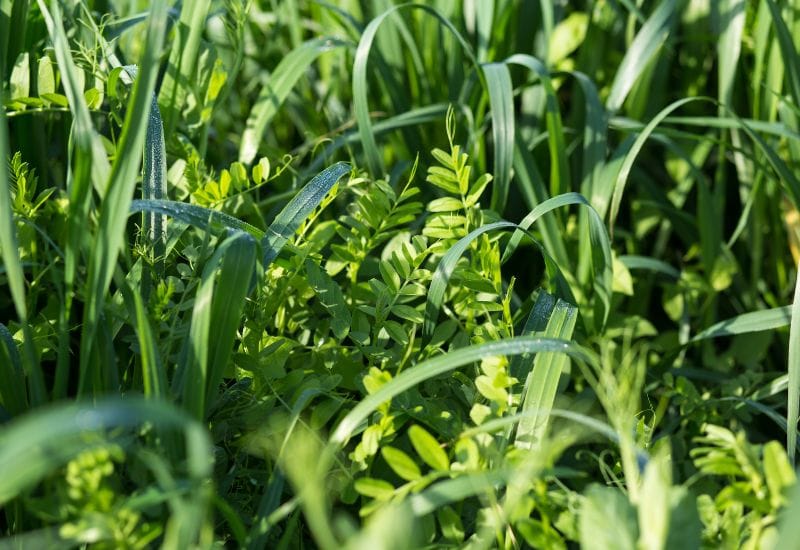
Cover crops are plants with the sole purpose of being tilled under. Winter cover crops are planted late in the year and left in the garden over the winter. Winter cover crops will:
While you can grow cover crops over winter, most of them will winter-kill. This includes clover, vetch, buckwheat, field peas, Allysum, and oats.
Other cover crops, such as winter wheat or fall rye, will germinate in the fall and lie dormant over winter to burst forth in the spring with fresh green growth.
When they are tilled under in the spring, the winter cover crops will decompose and add humus to the soil, improving the soil tilth and adding lots of nutrients.
5: Apply (Certain) Amendments to Improve Your Garden
While many amendments are best added in the spring so they are not washed away over the winter, there are some soil builders that will work their magic over the winter.
Remember, if you want to get technical, you can test your soil with a home test kit (or send samples to a lab) so you know exactly what to add to your garden.
Try adding these amendments in the fall:
Raw Manure
Raw animal manure is fresh poop, pee, and bedding from livestock that hasn’t been composted. It is very high in nitrogen and other nutrients and can come from a variety of animals including cows, sheep, horses, pigs, poultry, goats, and even rabbits.
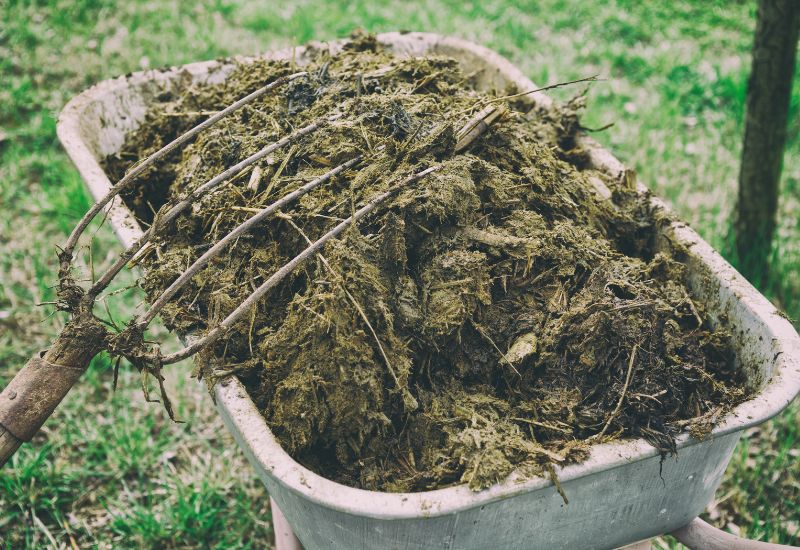
However, raw animal manure can contain pathogens, such as E. coli, which can pose a health risk, especially if you are growing vegetables. Most of these pathogens take at least 120 days to die.
Also, raw manure is very high in nitrogen and salts, which can burn plants if applied to growing crops. For both of these reasons, applying raw manure in the spring is not recommended.
The best time to apply raw manure is in the fall. This gives the pathogens time to die, and the raw manure to decompose. As it breaks down, excess nitrogen and salts will wash away leaving perfect humus for your plants in the spring.
Do not use raw manure from dogs, cats, or people in your garden as they will introduce dangerous pathogens that can still be present after they have decomposed.
Lime
Lime is added to that garden to improve the acidic soil. Alkaline makes nutrients more easily absorbed. It also adds trace minerals and improves the structure and texture of the soil.
Add lime to the garden in the fall so it will mix with the soil during the winter. In most gardens, lime is only necessary every three years, but you can use it more frequently as soil analysis suggests.
Lime comes in a variety of forms including limestone, quicklime, hydrated lime, dolomite lime, or gypsum.
Biochar
If you take organic matter and burn it, you have biochar. Biochar is high in nitrogen and carbon and usually has a fairly neutral pH though it can be alkaline. It is also a great amendment to improve drainage.
Add biochar at least several weeks before planting, or in the late fall or winter.
Wood Ash
When added to the garden, wood ash improves the soil similar to biochar and lime. It is not generally as concentrated as the other two, but it is free if you have a wood stove, fire pit, or burning barrel, and it will increase the alkalinity of your soil.
Sand
Add sand in the fall so it has all winter to incorporate itself into the soil. This will help drain away excessive spring runoff and let you get planting earlier in the spring.
Sand is an important part of a balanced soil structure. In fact, many ‘good’ garden soils consist of 40% sand. Sand is important in the soil because it improves air circulation and drainage. It also helps the soil warm up earlier in the spring.
Remember, don’t add sand to improve clay soil, as the combination will make the soil worse.
Clay
Clay is a heavy, clumping soil. Nevertheless, it is an important component of healthy soil. Clay is a very nutrient-rich soil, and it helps with water retention.
Over winter, the freeze-thaw process will help break up the clods so they can be incorporated into the soil in the spring.
6. Hold Off On Spreading Compost
While some soil builders can be added in the fall, compost should definitely wait until spring. Compost spread in the fall will be at the mercy of the winter’s rain and snow, and much of the nutrients will be washed out of the soil.
Of course, it is better to spread compost in the fall rather than not at all, but It is far better for your garden to wait until spring before adding any compost.
7. Protect Your Compost
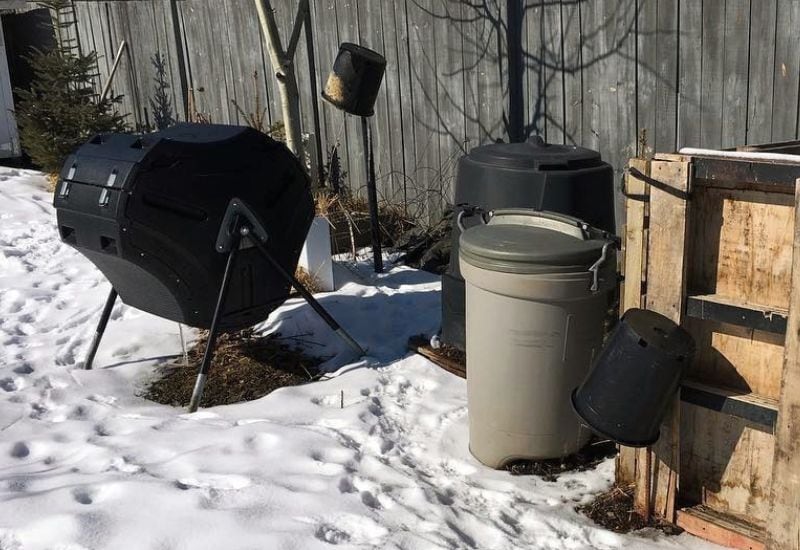
Even though you cannot spread your compost, you want to protect it over the winter so it is full of nutrients and ready to use in the spring.
If you have a compost bin, start by covering it to keep out excess moisture from washing out the nutrients.
And don’t forget, even if your compost freezes solid during the winter, you can still add to the pile so non of your precious food scraps or garden matter go to waste.
Another option is to heap up your compost material directly on top of an unused garden bed. After winter, the decaying matter can be worked into the soil.
Or, if the thought of maintaining a compost heap sounds too labor-intensive, consider trench composting as a way to build your garden’s fertility over winter (though you might have to dig the trench before the ground freezes).
8. Delay Cultivation
Digging or tilling your garden right before winter can cause unnecessary damage to your soil because it opens up the delicate sub-soil world to harsh and freezing elements.
If possible, do not work your soil in the fall so it remains undisturbed over winter.
For starters, fall cultivation opens the soil to erosion, as we discussed above. It also churns up any roots left behind by your plants. If left undisturbed, these roots will decompose in the soil and create healthy hummus.
Another element that is destroyed by fall cultivation is mycelium, which has been growing in your soil all summer long. Mycelium is a beneficial fungus that grows naturally in healthy soil, and it helps by
While there are some instances when preparing the soil before winter is beneficial, such as preparing a small area for an early spring planting, it is far better to hold off cultivating until spring.
9. Put Down A Winter Mulch
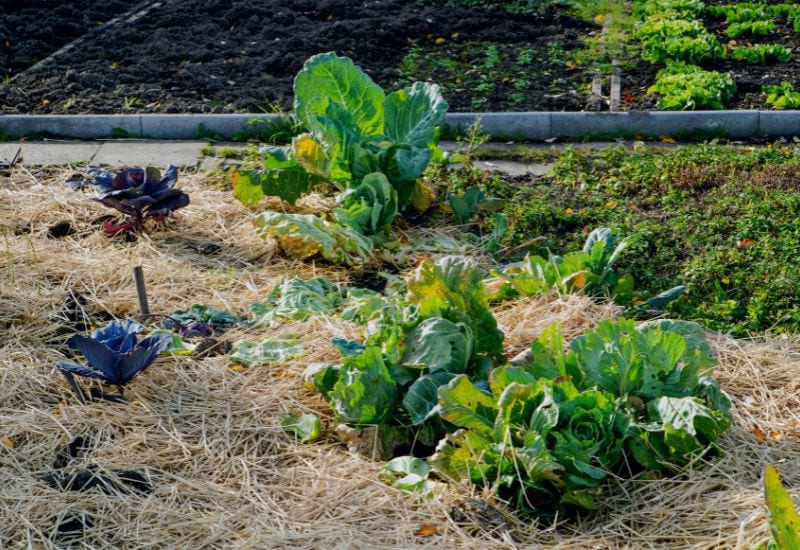
Mother Nature mulches herself every year in preparation for winter with falling leaves, dead grass, and decaying plant matter to protect the earth from the ravages of winter, and we can do the same.
Laying down a winter mulch will protect and improve your garden during the off-season.
The mulch will protect sensitive plants from freezing, stop erosion from winter rain or spring runoff, create an insulated environment for earthworms and other creatures, AND it will feed the soil as it decomposes.
Leaves make excellent mulch and they are one of the best soil amendments you can use.
Straw is another great organic mulch that is readily available in the fall as farmers finish harvesting their grain but feel free to use your favorite organic matter as a winter mulch.
10. Avoid Walking On The Garden
Your boots will compact the soil every time you step in your garden, and this is even true during the winter. Avoid walking through the garden in the off-season, or dedicate a few pathways to minimize the damage.
Walking through your garden will also push frost deeper into the ground so it will warm up slower in the spring.
We noticed this one year when we drove on a particular edge of one of our fields during the winter.
When spring came, the ground under where we drove remained frozen far longer than the surrounding areas.
Thankfully, we do not usually drive vehicles through our gardens but a similar thing can happen when we continually walk through our garden beds.
Conclusion
If you are like me, you are frustrated when your gardening endeavors are cut short because of a winter flurry.
But just because you can’t get out there and dig in the dirt, doesn’t mean your garden has to sit idle.
With a bit of planning, you can build your soil and improve its health and fertility, from the warmth of your home while the winter storms rage outside.
Happy winter gardening.

Written By
Amber Noyes
Amber Noyes was born and raised in a suburban California town, San Mateo. She holds a master’s degree in horticulture from the University of California as well as a BS in Biology from the University of San Francisco. With experience working on an organic farm, water conservation research, farmers’ markets, and plant nursery, she understands what makes plants thrive and how we can better understand the connection between microclimate and plant health. When she’s not on the land, Amber loves informing people of new ideas/things related to gardening, especially organic gardening, houseplants, and growing plants in a small space.
